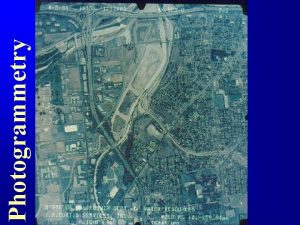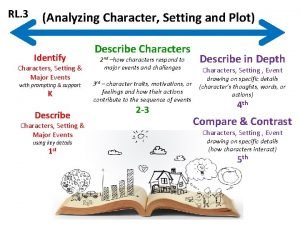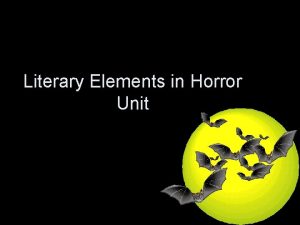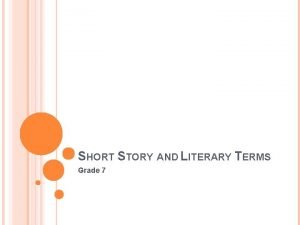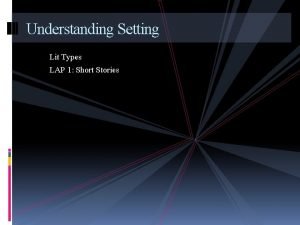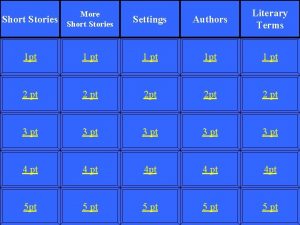Understanding Theme Literary Types LAP 1 Short Stories







- Slides: 7

Understanding Theme Literary Types LAP 1: Short Stories

Theme is a central idea in a literary work. Also, think of theme as the author’s message. In traditional literature, such as the fable or fairy tale, theme is the moral of the story.

Elements of Theme Sometimes, theme can be found in the symbolism of a work of literature. A symbol is anything that stands for or represents both itself and something else. This might be a conventional symbol, an object which many people have associations, such as a flag, a star, or a particular color identified with a mood, as green is identified with envy and black is identified with death.

Types of Themes Most works of fiction do not directly state theme. When theme is presented directly, it is called a stated theme. An implied theme leaves the reader to draw conclusions about theme and requires the reader to make inferences, or guesses, about the author’s intent and perception of the events in the story.

Literary Devices A literary device is a use of language that is intended to have an effect on its audience. Irony is the difference between appearance and reality. Irony of a situation occurs when an event happens that violates the expectations of the characters, the reader, or the audience.

Questions (continued) How does de Maupassant describe Mathilde Loisel? How does this affect your opinion of her? Do you know anyone like her? What are they like? What was her motivation in buying a fine dress and borrowing what she thought was an expensive piece of jewelry? Why do you think she had such a good time at the ball? Describe what happened after she lost the necklace—up to when she met Madame Forestier ten years later. What was her motivation in replacing the necklace? What does this say about her? Explain Mathilde Loisel’s attitude toward honesty.

“The Necklace” Answer the following literature questions with your group: Look at the list of themes in your lit. packet. What do you think is the central theme in “The Necklace”? What is a symbol in the story and what is it symbolizing? Is irony used? How?

